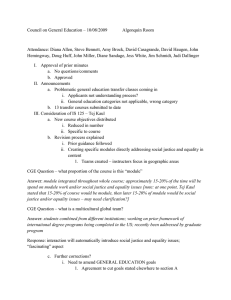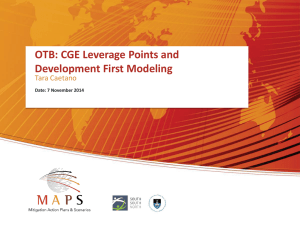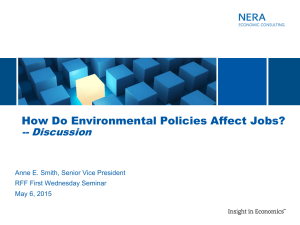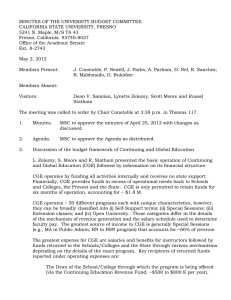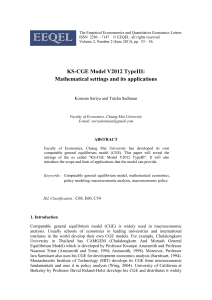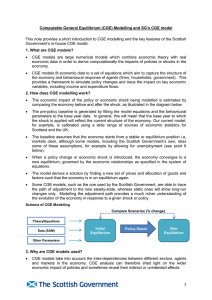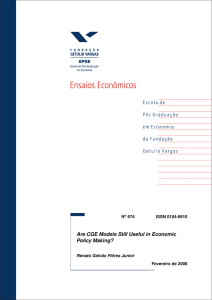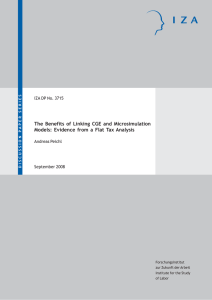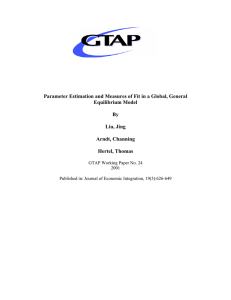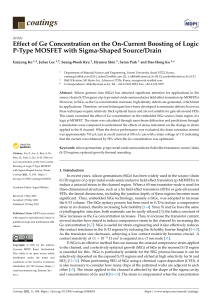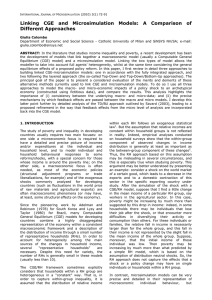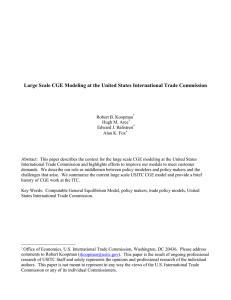Analytical General Equilibrium E¤ects of Energy Policy on Output and Factor Prices
advertisement
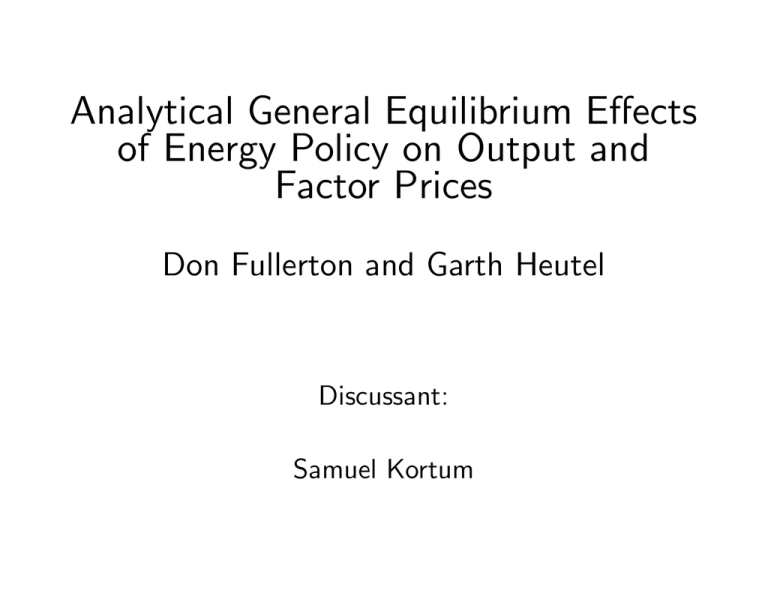
Analytical General Equilibrium E¤ects of Energy Policy on Output and Factor Prices Don Fullerton and Garth Heutel Discussant: Samuel Kortum Overview Important Question: What are distributional e¤ects of policies to control CO2 emissions? Policies change relative prices of goods and relative returns to factors: 1. Groups choose di¤erent mixes of consumption. 2. Groups own di¤erent mixes of factors. Link from policy to goods and factor prices: calibrated GE model. Link from prices to distributional e¤ects: 2008 Consumer Expenditure Survey (CEX). Value of Simpli…ed Models Issues of climate change have brought CGE models back into the mainstream. CGE models are too complicated to totally understand. Want the simplest model that can make sense of CGE results. This paper: hybrid of CGE and simple model. Model is both too simple and too complicated. A “Lerner Diagram” from international trade is a simple way to see the basic forces. Closed Form Solutions Is it really a closed-form solution? Actually the solution to a linearized system. Valid only for small changes in policy, i.e. change in carbon tax. Maybe that’s …ne for the question at hand, I don’t know. In contrast, CGE models typically solved exactly, albeit numerically. An Inconsistency Part I of paper uses a GE model with a representative consumer. Part II feeds the results into an analysis in which preferences di¤er by income group. There’s an inconsistency. Not a problem with studying the income e¤ects from changes in factor prices. But, typically can’t represent heterogenous preferences with a representative consumer. Results Part I: changes in goods and factor prices due to doubling carbon tax, from GE model: .... relative price of dirty good rises 7%, wage rises 0.04%, capital rental falls 0.07%. Part II: di¤erences in spending and sources of income from CEX: ... poor spend over 13% on dirty good, rich about 8%. ... poor get more income from transfers (but nuanced about wages vs. returns on capital). Sensible bottom line: little distributional action on income side and modest (1/2 percent on spending) Conclusions Important to confront these distributional issues. We too often ignore them in economics. The income cut generates less action than I expected for burden of a carbon tax. Are there other cuts where heterogeneity in the costs would be more striking?

